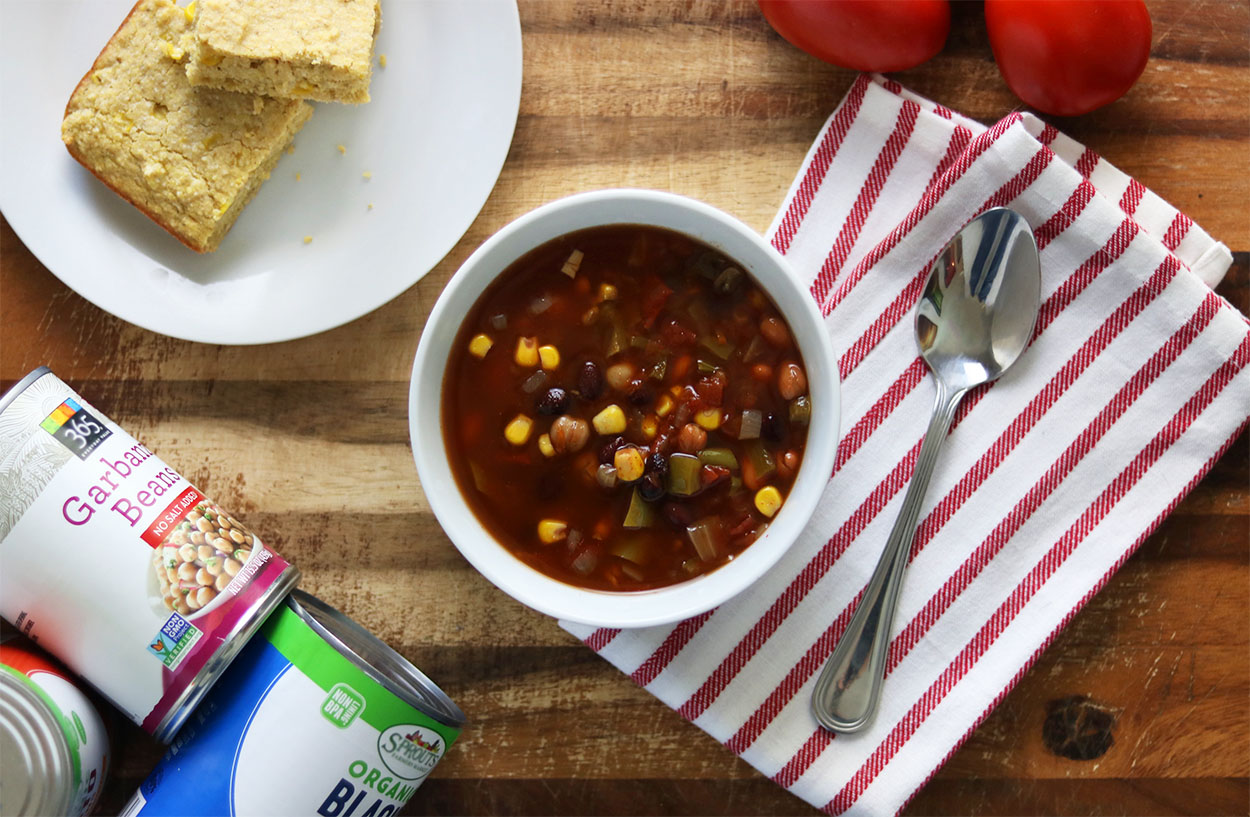I have loved chili since I was a little girl. My dad had a recipe that was our “classic” family version with black olives, and I grew up always looking forward to him making it, thinking that was the standard for chili. This is not the recipe I’m sharing today, however (it wasn’t vegan by any means, though I may still share a veganized version of it at some point…).
After meeting Dan and sharing my family’s chili recipe with him, he found the addition of black olives strange, and we instead started making his mom’s recipe regularly. Having cooked this recipe for years now, we’ve adjusted some of the ingredients and ratios, made it our own, and it continues to be a top-five regularly cooked recipe in our kitchen.
The key to this chili is the Anaheim peppers. Anaheims are a Southern California pepper (originating in Mexico) that ranks low on the Scoville Scale (500-2500 SHU), making them one of the mildest pepper options while still packing a unique, sweet, smokey and appealing flavor.
I usually make this recipe with five types of beans and give types of chiles, but it can really be made with just one type of bean and the Anaheims and is extremely forgiving to whatever ratios of ingredients you use; the variety of beans and chiles just adds more depth of flavor and texture to the dish, which, for us, has made it part of the reason why keep coming back to it again and again as a regular dish.
If you’re not a fan of spicy things you can scale back the peppers you use and stick with just the chili powder and Anaheims, leaving out the pith of all the peppers. If you like to be in pain while you eat (I add cayenne at the table regardless of how much spice is already in food), you can use all five peppers and enjoy the additional flavor and heat you get from the combination of all of them.
This chili is:
- Sweet
- Smokey
- Spicy
- Great with pasta, over rice, or with toast or cornbread
It’s a staple in our household and one of our top five recipes because it’s easy to make, doesn’t need to be precise, and can be made in large batches to get us through the week.
If you try out this recipe, please share it with me by commenting or tagging me in a photo on Instagram @plantsnotplastic. Enjoy!

Smokey Sweet Anaheim Chili
Ingredients
Equipment
Method
- Chop and prep all ingredients
- In a large pot, add onion, garlic, and all peppers and seeds and cook on medium-high to high heat until bottom of pan has just caramelized (~6-8 minutes)
- Add chopped tomatoes and use steam and liquid from them to deglaze bottom of pan [note#4]
- Increase to high heat, stirring frequently until bottom of pan caramelizes again, ~10-12 minutes
- Add beans, corn, chili powder to taste, and cayenne and dry thai chili if using, then bring to a boil
- Remove lid, stir, cover [note #3] reduce to simmer and cook for at least 30 minutes [note #5]
- Serve by itself or with toast, or as a topping over rice or pasta. Enjoy!
Video
Notes
- I like to make this recipe with a variety of beans, but you can simplify and use just one or a few types of beans as long as the volume stays the same
- I recommend dry beans for a cheaper and tastier zero waste option over canned
- Add more water and cook covered if you prefer chili with more liquid; add less water and cook uncovered if you prefer thicker chili
- This is a no-oil, no-water method for stovetop cooking which maintains the most flavor; you're looking for the moment right before the bottom of the pan starts to burn before adding your next ingredient(s), then using the natural moisture from those ingredients to unstick the caramelization on the bottom of the pan
- Chili can take a lot of time on the stove; the longer you cook it, the more flavor development you'll get; just make sure to stir every so often to avoid it overcooking and sticking the bottom of the pan



Leave a Reply